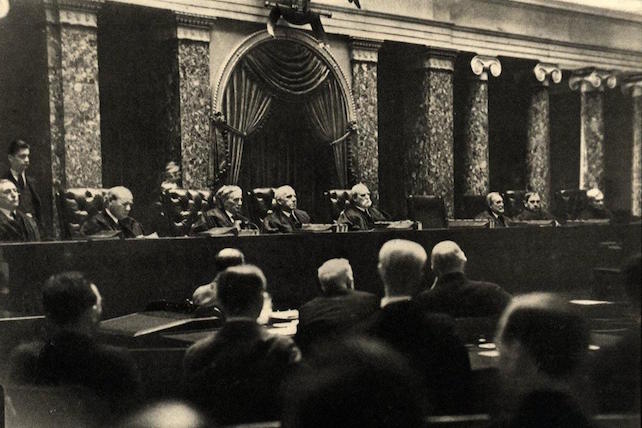Nomi Stolzenberg, Professor of Law, the University of Southern California. This article is republished from The Conversation under a Creative Commons license. Read the original article.
(THE CONVERSATION) Amy Coney Barrett’s confirmation process has put focus not only on the would-be Supreme Court justice’s faith but the religious makeup of the court itself.
If she is appointed, Barrett would be the second successive Catholic elevated to the U.S.‘s highest court and the third Trump appointee to find favor with the religious right.
As a scholar who has studied the intersection of faith and law, I know that religion has always played a strong role in shaping the composition of the United States Supreme Court. The specific nature of that influence, however, has changed over time. In recent decades it has been shaped by conservatives of different faiths, construed as part of a mythical Judeo-Christian tradition, coalescing around a common agenda.
Protestant stronghold
For the first 190 years of its existence, from 1790 to 1980, the religious divisions that defined the court were denominational in nature rather than ideological.
Of the 101 men appointed to the Supreme Court in this period – there was no woman until 1981 – 90 were Protestants, the vast majority being affiliated with mainline churches.
In contrast, there were just six Catholics, starting with Robert Taney, appointed by President Andrew Jackson in 1836. This number rises to seven if you count Justice Sherman Minton, who converted to Catholicism after he left the bench in 1956.
The first Jew on the high court was the celebrated legal mind Louis Brandeis, appointed by Woodrow Wilson in 1916. In all, there were five Jewish justices in the period up to 1970.
Perhaps the strongest indication of the hegemony of mainline Protestantism during the early era of the court is how little it was questioned. The appointment of a few non-Protestant justices did little to alter the religious character of the court.
The first non-Protestants, Chief Justice Taney and Edward Douglass White, appointed in 1894, were both Roman Catholics, and each sat as the lone non-Protestant on the bench. Though they did not entirely escape anti-Catholic bigotry, which remained a feature of America’s Protestant culture at least until John F. Kennedy’s election, their religion was largely not an issue.
The same cannot be said for the court’s first Jewish justice. Brandeis did arouse objections based on his religion and legal historians have long detected a strong whiff of anti-Semitism in the criticisms leveled against Brandeis. For example, William F. Fitzgerald, a conservative Boston Democrat, wrote on Brandeis’ appointment that “the fact that a slimy fellow of this kind by his smoothness and intrigue, together with his Jewish instinct canbe appointed to the Court should teach an object lesson” to Americans.


